What is a distributed workforce: Benefits, best practices, and challenges

In today's fast-paced digital landscape, traditional office setups are giving way to more flexible and innovative ways of working. One such evolution is the concept of a distributed workforce, which has gained significant momentum in recent years.
In this blog, we'll delve into what a distributed workforce is, explore its benefits, uncover best practices for managing it effectively, and discuss the unique challenges it presents.
Whether you're a business owner looking to adapt or a remote worker seeking insights, this guide will provide you with valuable insights into the world of remote and distributed work. So, let's dive in!
What is a distributive workforce?
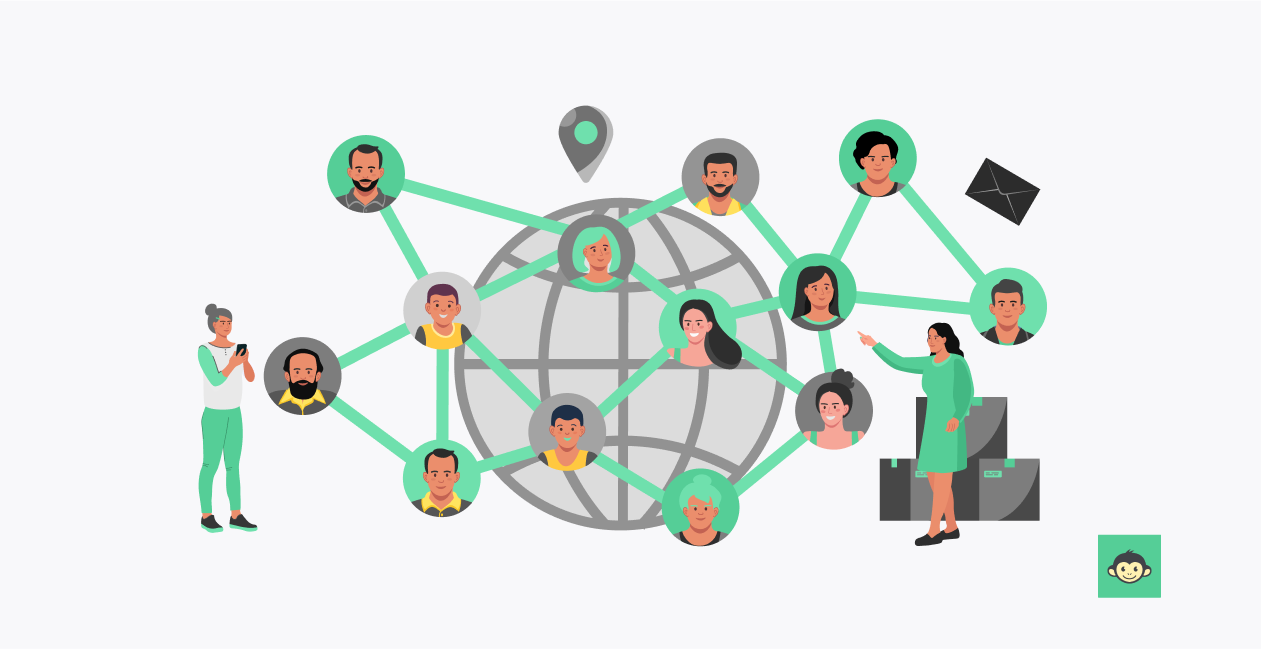
Simply put, a distributed workforce is a team of employees spread across different geographical locations, often working remotely. It's like having an orchestra where each musician plays their instrument from a different part of the world, yet they manage to create beautiful music together.
Take, for instance, Buffer, a social media management platform. Over 70% of their team members work remotely, hailing from various corners of the globe. This allows them to tap into a diverse talent pool and provide around-the-clock customer support.
With the advent of technology and the internet, the idea of working together while being miles apart is no longer a futuristic concept; it's our reality.
What is a globally distributed workforce?
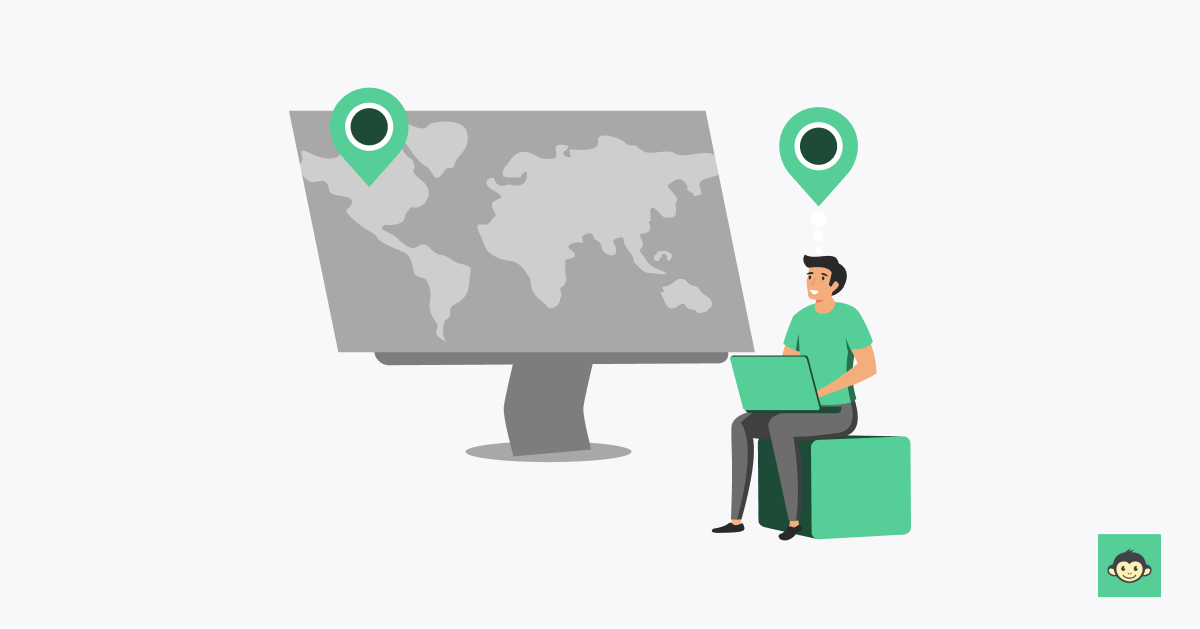
A globally distributed workforce refers to a model of employment wherein individuals collaborate and perform their duties from different physical locations across the world.
Unlike traditional centralized workforces confined to a single physical location, a globally distributed workforce harnesses digital technologies and communication tools to facilitate seamless collaboration among team members dispersed across different geographical regions.
This workforce model enables organizations to leverage talent from diverse cultural backgrounds and time zones, fostering innovation and creativity.
By transcending geographical boundaries, companies can access a broader talent pool, tapping into specialized skills and expertise that may not be readily available in their immediate vicinity.
However, managing a globally distributed workforce requires careful coordination and communication strategies to overcome challenges such as language barriers, cultural differences, and varying work practices.
Effective leadership, clear communication channels, and the utilization of technology play crucial roles in ensuring productivity and collaboration within a globally distributed workforce.
What are distributed ways of working?
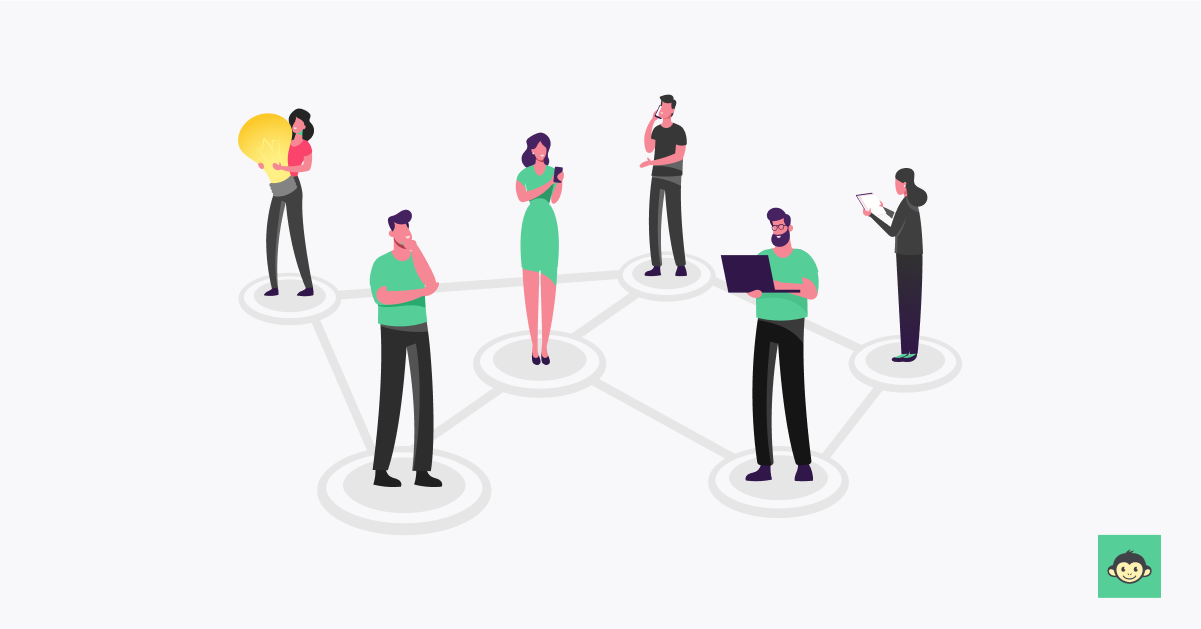
The beauty of distributed ways of working lies in the freedom it offers to both employees and employers.
Imagine the end of your daily commute, those congested highways or crowded subways - all replaced by a short stroll to your workspace. Productivity spikes as employees find themselves in familiar, comfortable environments, and the stress of commuting evaporates.
This transformative approach to work is changing the game, offering a fresh perspective on how we can be productive while breaking free from the traditional office cubicle.
The rise of remote work
Picture this: you wake up, grab your coffee, and head to your favorite spot in your home. That's your office for the day. Distributed ways of working, often synonymous with remote work, allow employees to work from various locations.
It's a powerful shift that has gained momentum, thanks to technological advancements and a growing desire for work-life balance.
The freedom factor
One of the key attractions of distributed ways of working is the newfound freedom it offers. Say goodbye to the daily grind of commuting through traffic-clogged streets or packed public transport.
With the ability to work remotely, you gain precious time back in your day. Your workspace could be your cozy home office, a trendy co-working space, or even that charming coffee shop down the street.
Empowering productivity
Many find that they're more productive in a distributed work environment. Freed from the distractions and discomfort of a traditional office, employees can tailor their workspaces to their liking.
They can create an environment that boosts their focus, resulting in higher productivity. The right tools, like cloud-based software and video conferencing platforms, enable seamless collaboration, even if your team is scattered across different time zones.
The challenges of remote work
While distributed ways of working offer a cornucopia of benefits, they come with their unique set of challenges. Staying motivated and self-disciplined can be tricky when your cat keeps trying to sit on your keyboard. Isolation can creep in, as face-to-face interactions decrease.
Plus, ensuring data security in a distributed setup requires careful attention. Fortunately, companies are adapting and crafting strategies to address these challenges, offering the necessary support and infrastructure.
The future of work
In conclusion, distributed ways of working are more than just a trend; they're shaping the future of work. They provide unprecedented flexibility and offer a pathway to a more balanced and dynamic professional life.
Remote work is not merely about working in your pajamas; it's about redefining the way we work, opening up new possibilities, and allowing us to be more productive and content in our professional lives.
Is the distributed workforce model going to stay?

The distributed workforce work model is not just a passing trend; it's here to stay and is continuously gaining traction. While the COVID-19 pandemic accelerated its adoption, the advantages it offers are too significant to ignore.
According to a study by FlexJobs, 65% of remote workers want to remain remote post-pandemic. Additionally, companies like Twitter and Square have announced permanent remote work policies, further cementing this shift.
As technology continues to evolve, enabling seamless communication and collaboration across borders, the distributed workforce is becoming more viable and appealing.
Companies are finding that they can access top-tier talent, reduce overhead costs, and enhance employee satisfaction by embracing this model. So, it's safe to say that distributed workforces are here for the long haul.
How do you manage a distributed workforce?
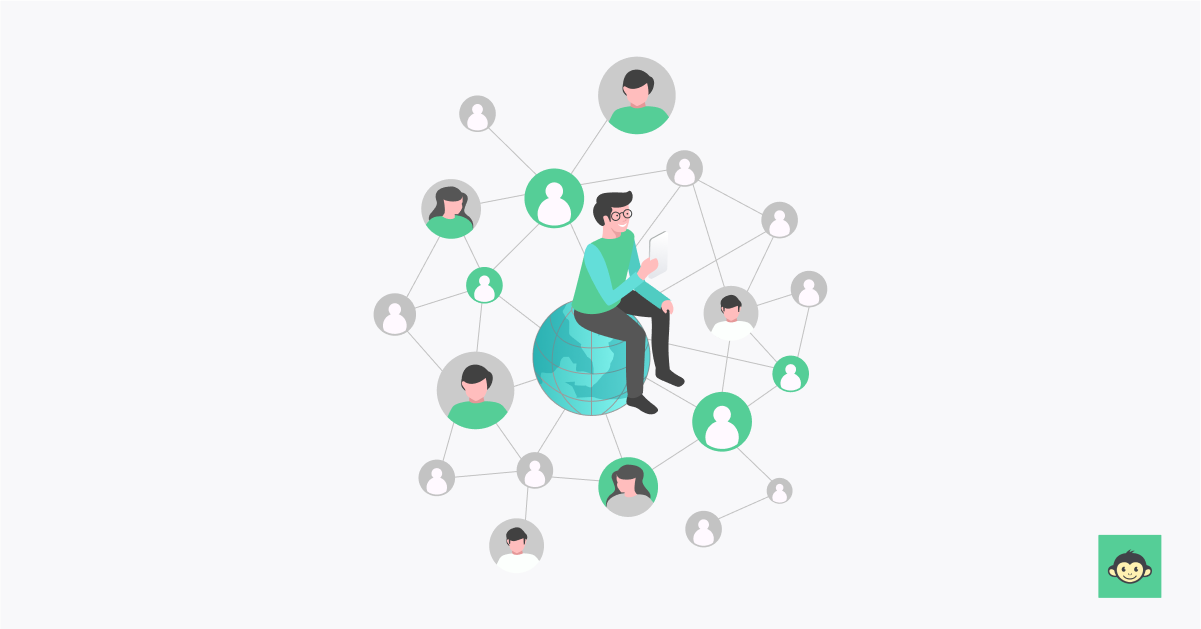
Managing a distributed workforce is like conducting a symphony without ever seeing your musicians in person. It's a unique challenge, but with the right approach, it can be incredibly rewarding. So, how do you manage distributed employees effectively?
Let's dive into nine essential pointers to help you orchestrate success:
- Embrace technology: Technology is your best friend in the world of distributed work. Invest in robust communication and project management tools. Video conferencing platforms like Zoom or Microsoft Teams help bridge the gap between remote team members.
- Define clear expectations: When your team is scattered across different locations, setting clear expectations is paramount. Outline project goals, timelines, and individual responsibilities in explicit detail. Make sure everyone knows what's expected of them.
- Establish a communication rhythm: Regular and effective communication is the lifeblood of a distributed workforce. Schedule daily or weekly check-ins to keep everyone connected. These meetings provide a platform for discussing progress, sharing updates, and addressing any roadblocks.
- Trust your team: Trust is the cornerstone of remote work success. Hire individuals you believe in and trust them to deliver. Micromanagement doesn't work in a distributed setup. Focus on outcomes and give your team the autonomy to achieve them.
- Foster a sense of belonging: Remote workers can sometimes feel disconnected from the company culture. Counteract this by creating opportunities for team bonding. Virtual coffee breaks, online team-building activities, and even casual video chats can help team members connect on a personal level.
- Provide learning opportunities: Just because your team isn't in the same physical location doesn't mean they should stop learning and growing. Invest in training and development programs. Encourage your team to acquire new skills and knowledge.
- Address time zone differences: If your distributed workers spans multiple time zones, be mindful of this challenge. Schedule meetings and deadlines in a way that accommodates everyone as fairly as possible. Utilize time zone management tools to ensure everyone knows when and where things are happening.
- Create a secure environment: Data security is crucial, especially when dealing with remote work. Implement robust cybersecurity software to protect sensitive information. Ensure your team is educated on best practices to keep data safe.
- Feedback and recognition: Last but not least, provide feedback and recognition consistently. Positive reinforcement is as important in a virtual environment as it is in a physical office. Acknowledge achievements, provide constructive feedback, and let your team know their contributions are valued.
What is remote distributed workforce?
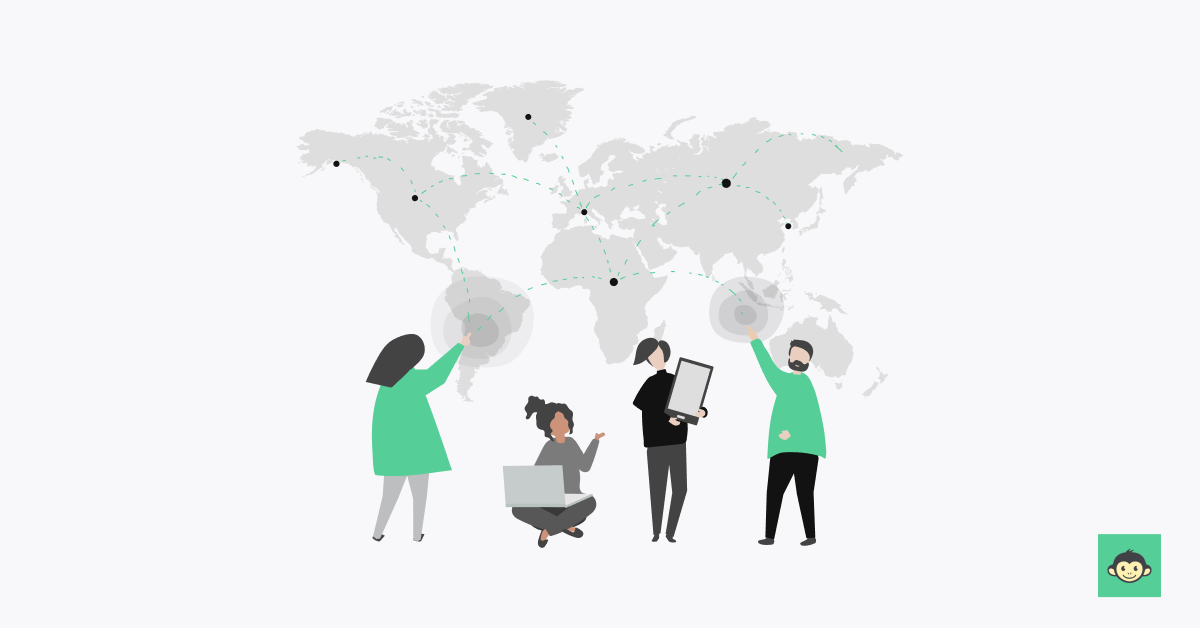
A remote distributed workforce refers to a model of employment wherein individuals collaborate and perform their duties from various locations, often outside of a traditional office setting.
This arrangement leverages modern technology to facilitate communication, collaboration, and productivity among team members who may be geographically dispersed.
Unlike a centralized workforce, where employees typically work from a single location, a remote distributed workforce allows for flexibility in work arrangements, enabling individuals to work from home, co-working spaces, or other remote locations.
This model offers several benefits to both employers and employees. For employers, it provides access to a broader talent pool, allowing them to recruit skilled professionals regardless of their geographical location.
For employees, remote work offers greater flexibility and autonomy over their work schedules, leading to improved work-life balance and job satisfaction.
However, effectively managing a remote distributed workforce requires careful planning and implementation of appropriate technologies and policies.
Employers must ensure clear communication channels, establish performance metrics, and provide adequate support and resources to remote employees to ensure productivity and collaboration.
What is the difference between remote and distributed workforce?

While remote and distributed workforces both involve employees working outside a traditional office, there is a subtle yet important distinction between the two:
Remote workforce
A remote workforce typically consists of employees who work from various locations but are still primarily tied to a central office or headquarters. They may work from home, a local coffee shop or shops, or co-working spaces.
The key is that they remain closely connected to the company's physical base. An example – A marketing team where members work from different cities but regularly commute to the company's central office for meetings.
Distributed workforce
On the other hand, a distributed workforce operates without a central office, and its members are often spread across many different locations, time zones and regions. They rely heavily on digital tools and communication to collaborate.
An example – A software development team with members in the United States, India, and Eastern Europe, who communicate primarily through virtual platforms and rarely meet in person.
Now, let's take a closer look at the nuances of these two workforce models. Remote teams maintain a more tangible connection to a central office, often having the option to meet face-to-face.
This model is ideal for organizations that value occasional in-person interactions and can benefit from the physical proximity of team members.
On the flip side, distributed teams thrive on digital collaboration and often function seamlessly without ever meeting in person. They're like a global orchestra, with each member playing their part from different corners of the world. This model is fantastic for tapping into a diverse talent pool and offers remarkable flexibility.
Both remote and distributed workforces have their pros and cons, and the choice between them depends on a company's goals, culture, and the nature of the work. The key is to find the right balance that aligns with your organization's vision and ensures your team operates effectively, whether they're a stone's throw away or an ocean apart.
In essence, remote work can be a subset of the distributed work model, but the key distinction lies in the degree of decentralization and the reliance on physical office space.
The distributed workforce model is more independent and decentralized, promoting a higher level of flexibility and autonomy among team members.
Types of distributed work models
Distributed work models – they're like the different flavors of ice cream, each with its unique taste. In the ever-evolving world of work, organizations are experimenting with various distributed models to find the perfect scoop for their teams. Let's explore a few of these tasty options:
- Fully remote teams: Imagine working from your cozy home office, a beach cabana, or even a mountaintop hideaway. That's the life of fully remote teams. In this model, employees can work from anywhere in the world, as long as they have an internet connection. Companies often use EOR services, such as Multiplier, to handle global compliance and streamline payroll, making this dream setup a reality.
- Hybrid workforce: The hybrid workforce model is like a fusion of remote and on-site work. Some team members work from the office, while others work remotely. This approach accommodates those who prefer face-to-face interaction, while still embracing the benefits of remote work. It's all about striking the right balance.
- Distributed offices: Think of distributed offices as satellites of a central hub. In this model, a company maintains several physical offices in different locations, often in various cities or regions. These offices serve as smaller, self-contained units, each with its own team and responsibilities.
- Flextime and telecommuting: Flextime and telecommuting models provide employees with the option to choose when and where they work. They might work from home a few days a week or have flexible hours to accommodate personal commitments. It's a model that emphasizes work-life balance and offers employees the freedom to tailor their work schedules to their needs.
- Freelancers and gig workers: The gig economy is booming, and many companies are leveraging freelancers and gig workers as a distributed work model. Instead of hiring full-time employees, they contract with independent professionals for specific tasks or projects.
Each of these distributed work models has its own set of benefits and challenges. For instance, fully remote teams offer flexibility but can sometimes lead to feelings of isolation. Hybrid workforces combine the best of both worlds but require careful management.
Distributed offices allow for local presence but may need extra coordination. Flextime and telecommuting prioritize work-life balance but can be tricky to implement. Freelancers and gig workers offer agility but may require a different approach to team building.
What are the benefits of a distributed workforce?
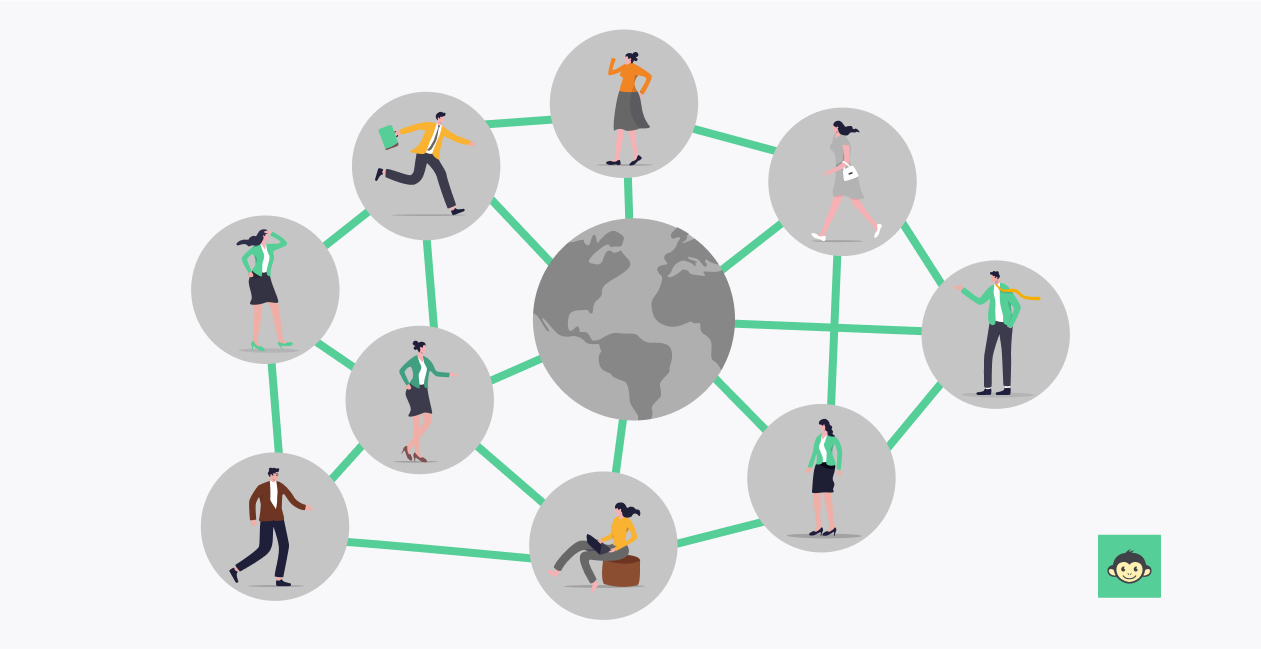
Access to global talent pool
One of the most significant advantages of a geographically distributed workforce is the ability to tap into a vast and diverse talent pool. Companies can hire the best talent, regardless of their physical location. For example, GitLab, a web-based platform for software developers, has over 1,300 team members from 68 different countries.
Cost savings
Operating without a physical office space reduces overhead costs significantly. Companies can save on rent, utilities, and maintenance expenses. A study by Global Workplace Analytics found that a typical employer can save about $11,000 per year for every remote worker.
Enhanced productivity
Remote work often leads to increased productivity. Employees can design their work environment to suit their preferences, resulting in improved focus and efficiency. According to a FlexJobs survey, 51% of remote workers reported being more productive when working from home.
Work-life balance
Distributed workforces often promote a healthier work-life balance. Employees can better manage their personal and professional lives, leading to reduced stress and burnout. This, in turn, can boost morale and job satisfaction.
Geographical flexibility
Companies can expand their reach and enter new markets more easily when they have a distributed workforce and satellite offices. They can establish a presence in different regions without the need for physical offices.
24/7 operations
With team members spanning various time zones, businesses can offer 24/7 customer support and faster turnaround times on projects. This can be a significant competitive advantage.
Business continuity
Distributed teams are more resilient in the face of natural disasters, political instability, or global crises like the COVID-19 pandemic. Business operations can continue uninterrupted when team members are not tied to a single location.
Diversity and innovation
A distributed workforce brings together diverse perspectives and experiences. When people from different backgrounds collaborate, it often leads to creative problem-solving and innovative ideas. This diversity can be a game-changer, sparking fresh approaches and driving the company's success.
Reduced commuting stress
One of the perks of remote work is bidding farewell to the dreaded daily commute. Employees save time and energy by avoiding traffic jams and crowded public transport. This reduction in commuting stress contributes to their overall well-being and job satisfaction.
Environmental impact
Remote and distributed work models are eco-friendly. With fewer employees commuting to a physical office, there's a decrease in traffic congestion and carbon emissions. It's a small step toward a greener planet, which is becoming increasingly important to both companies and their employees.
Cost-effective scaling
Scaling your workforce up or down becomes more manageable with a distributed model. You can swiftly onboard freelancers or part-time workers as needed, without worrying about physical space constraints. This flexibility allows you to respond quickly to changing market conditions.
Access to niche skills
Tapping into a distributed workforce means you can access niche skills and expertise that might not be available in your immediate geographical area. This can be a game-changer when you're working on specialized projects or need unique talents.
Enhanced employee retention
Offering remote work options can significantly boost employee retention. When employees have the flexibility to balance work and life, they're more likely to stay with your company for the long haul. This saves you the time and costs associated with recruiting and training new team members.
Improved employee satisfaction and morale
Remote work options contribute to higher levels of employee satisfaction and morale. Employees appreciate the flexibility and autonomy that comes with remote work, leading to increased motivation and engagement.
Expanded access to diverse markets
With a distributed workforce, companies gain insight into diverse markets and consumer preferences worldwide. Employees located in different regions can provide valuable feedback and cultural insights, helping companies tailor their products or services to specific demographics.
9 Distributed workforce best practices
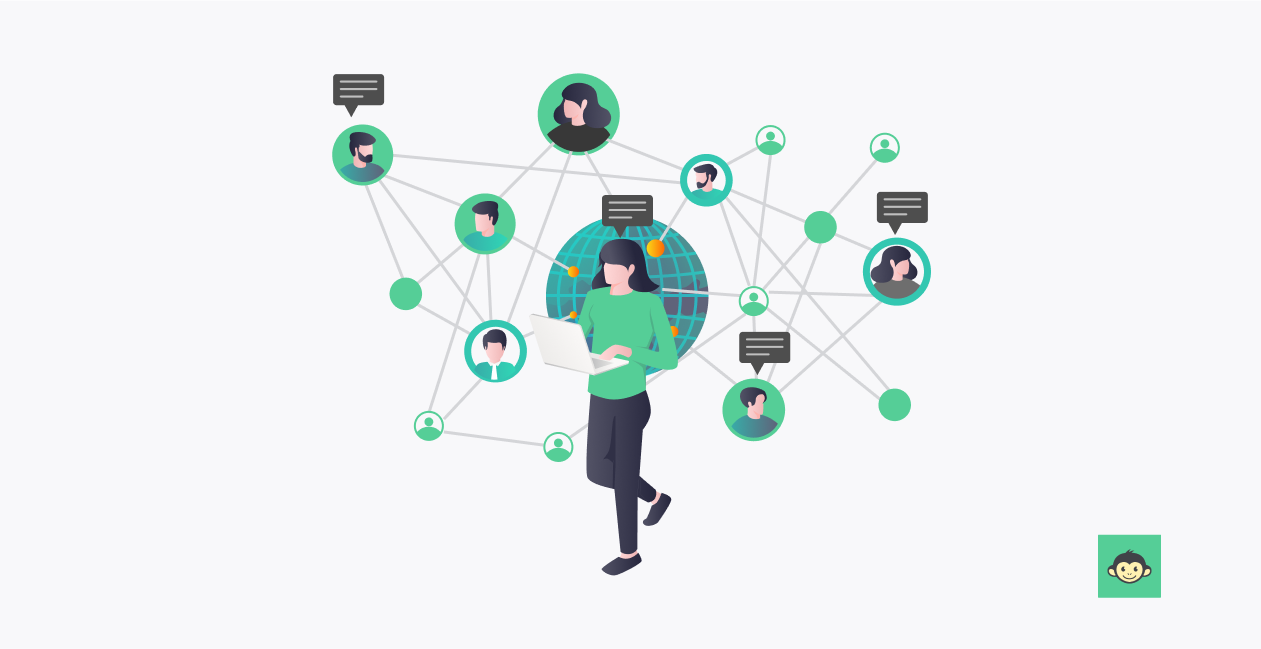
Whether your team is spread across different locations, working from home, or collaborating virtually, effective management is key to success. To help you navigate this new terrain, here are nine best practices for managing a distributed workforce:
- Clear communication: Establish clear and efficient communication channels using tools like Slack, Zoom, or Microsoft Teams. Regular check-ins and updates are crucial to keep the entire team connected.
- Set expectations: Define clear expectations for work hours, deadlines, and deliverables. This ensures that everyone is on the same page and knows what is expected of them.
- Use technology wisely: Invest in reliable technology and software to facilitate collaboration and streamline workflows. Document sharing, project management, and video conferencing tools are essential.
- Cultural sensitivity: Be mindful of cultural differences within your team. Understand and respect varying work cultures, holidays, and communication styles to foster inclusivity.
- Performance metrics: Implement performance metrics and Key Performance Indicators (KPIs) to measure productivity and outcomes. This helps in evaluating remote team members objectively.
- Professional development: Provide opportunities for skill development and career growth for remote employees. This can include online training, mentorship programs, or virtual team-building activities.
- Security measures: Ensure robust cybersecurity practices to protect sensitive data and maintain data privacy. Remote work can pose security risks, so investing in cybersecurity is crucial. One effective approach is to consider the MSP model, which can provide comprehensive cybersecurity solutions and manage your IT infrastructure.
- Continuous feedback and recognition: Establish a culture of regular feedback and recognition. Remote team members can sometimes feel isolated, so acknowledging their contributions and providing constructive feedback is essential for their growth and motivation. Celebrate achievements and milestones, and make your remote workforce feel appreciated and valued.
- Team building and social interaction: Promote team building and social interaction within your distributed workforce. While physical distance can be challenging, it's important to create opportunities for virtual team-building activities, casual virtual coffee breaks, or online games that help team members connect on a personal level.
What is distributed workforce strategy?

First, picture this: Your team members are scattered across different cities, time zones, and perhaps even continents. A distributed workforce strategy is your game plan for managing this modern, mobile workforce effectively.
The foundation of a distributed workforce strategy lies in defining your goals and objectives. What do you want to achieve with this remote and flexible setup?
Increased productivity, cost savings, access to a wider talent pool, or perhaps better work-life balance for your employees? Once you've got your goals down, you can start building your strategy.
A critical component of your strategy is technology. Embrace the tools and platforms that allow seamless communication, collaboration, and project management. Video conferencing, team messaging apps, cloud-based storage – these are your trusty companions in the distributed work landscape.
Now, let's talk about policies and guidelines. Set clear expectations for your team members. What are the working hours? How should they communicate and report their progress? What about data security? These are the rules of the game that ensure everyone's on the same page.
Your strategy should also include measures for building a strong company culture. Remote work doesn't mean an absence of culture; it just means you need to nurture it differently. Create opportunities for virtual team-building, recognize achievements, and encourage social interaction, even if it's through a screen.
And here's an important point – continuous feedback and evaluation. Your strategy isn't set in stone; it should evolve with your team's needs and the changing work landscape. Regularly gather feedback from your employees to understand what's working and what needs improvement.
5 Distributed workforce strategies to manage your workforce well

Managing a distributed workforce effectively is a challenge that organizations increasingly face in today's evolving work landscape. With remote and flexible work becoming the new norm, it's essential to develop strategies that not only maintain productivity but also nurture a positive and engaged workforce.
These five distributed workforce strategies are designed to help organizations navigate this dynamic terrain and create an environment where remote and flexible work thrives:
1. Clear communication plans
Develop a well-defined communication strategy that includes regular team meetings, one-on-one check-ins, and updates on project progress. Use a mix of synchronous (real-time) and asynchronous (flexible time) communication tools to accommodate different time zones and work preferences.
2. Performance metrics and key performance indicators (KPIs)
Establish measurable KPIs that align with company goals and individual roles. Regularly review and assess performance based on these metrics to ensure that remote employees are meeting their objectives.
3. Embrace flexibility
Allow for flexible work schedules and flexible hours whenever possible. Recognize that employees may have different peak productivity hours, and accommodating their preferences can lead to higher job satisfaction and productivity.
4. Training and development
Invest in training and professional development opportunities for remote team members. Provide access to online courses, workshops, and resources that help them grow in their roles and stay competitive.
5. Cultural integration
Foster a sense of belonging and camaraderie among remote workers. Organize virtual team-building activities, celebrate cultural diversity, and create opportunities for employees to bond, even if they are physically distant.
Common challenges in managing a distributed workforce

Managing a distributed workforce is undoubtedly rewarding, but it comes with its share of challenges. Beyond the common issues like communication barriers, isolation, and security concerns, here are five more common challenges to be aware of:
- Communication barriers: Miscommunication can occur when relying solely on digital communication tools. Nuances in tone and body language may be lost, leading to misunderstandings.
- Isolation and burnout: Remote employees may experience feelings of isolation and burnout due to the absence of in-person social interactions and difficulty in setting boundaries between work and personal life.
- Security concerns: Cybersecurity risks increase when team members work from various office locations. Companies need robust security measures to protect sensitive data and prevent breaches. This includes ensuring that platforms used for file sharing, communication, and tools like invoice generators are secure and compliant with privacy standards.
- Accountability issues: Without the right tools and direct supervision, some employees may struggle to stay motivated and accountable for their tasks, leading to productivity challenges.
- Time zone differences: Coordinating meetings and collaborative work across the multiple locations and time zones can be a logistical challenge, potentially leading to delays and scheduling conflicts.
- Cultural differences: Diverse teams bring unique perspectives but can also encounter cultural clashes or misunderstandings. Cultural sensitivity and awareness are crucial to navigate these challenges.
- Lack of work-life balance: Remote workers may find it challenging to separate work from personal life, leading to overworking and, ultimately, burnout. Employers should encourage a healthy work-life balance for distributed workers.
- Tech issues: Technical problems, such as poor internet connectivity or software glitches, can disrupt work and cause frustration for remote employees.
- Onboarding and training: Bringing new team members into the fold can be a complex process in a distributed workforce. Onboarding and training may require additional time and effort to ensure that remote employees are fully integrated into the company culture and familiar with the tools and processes.
- Employee engagement and motivation: Keeping remote workers engaged and motivated can be a real challenge. A lack of daily in-person interactions and the physical absence of colleagues can lead to feelings of disconnection.
- Data management and collaboration: Efficient data management and collaboration can be challenging when team members are dispersed. Ensuring that everyone has access to the right information, at the right time, and can collaborate effectively on projects requires robust systems and policies.
- Legal and compliance issues: Navigating the legal and compliance landscape can be more complex with a distributed workforce. Different regions may have unique employment laws and regulations that companies need to adhere to. Failure to do so can lead to legal issues and fines.
- Trust and communication gaps: Building and maintaining trust in a distributed workforce can be difficult. Some team members may feel overlooked or excluded, leading to a lack of trust.
Communicating with a distributed workforce

Communication with a distributed workforce is a critical aspect of effectively managing remote teams and ensuring productivity and cohesion.
Advantages of communicating with a distributed workforce:
- Accessibility: Utilizing digital communication tools allows team members to connect from anywhere with an internet connection, enabling seamless communication regardless of geographical location.
- Flexibility: Remote communication platforms offer flexibility in scheduling meetings and discussions, accommodating different time zones and work schedules of team members.
- Cost-effectiveness: Communicating digitally reduces the need for expensive travel and accommodation expenses associated with in-person meetings, leading to cost savings for the organization.
- Documentation: Digital communication platforms provide a record of conversations, meetings, and decisions, serving as valuable documentation for reference and accountability.
- Increased transparency: Regular updates and information sharing through digital channels promote transparency within the team, ensuring everyone is informed and aligned with organizational goals and objectives.
- Enhanced collaboration: Virtual collaboration tools enable real-time collaboration on documents, projects, and tasks, fostering teamwork and innovation among remote team members.
- Scalability: Digital communication platforms can easily accommodate the growing needs of a distributed workforce, allowing organizations to scale communication efforts as the team expands.
Distributed team productivity
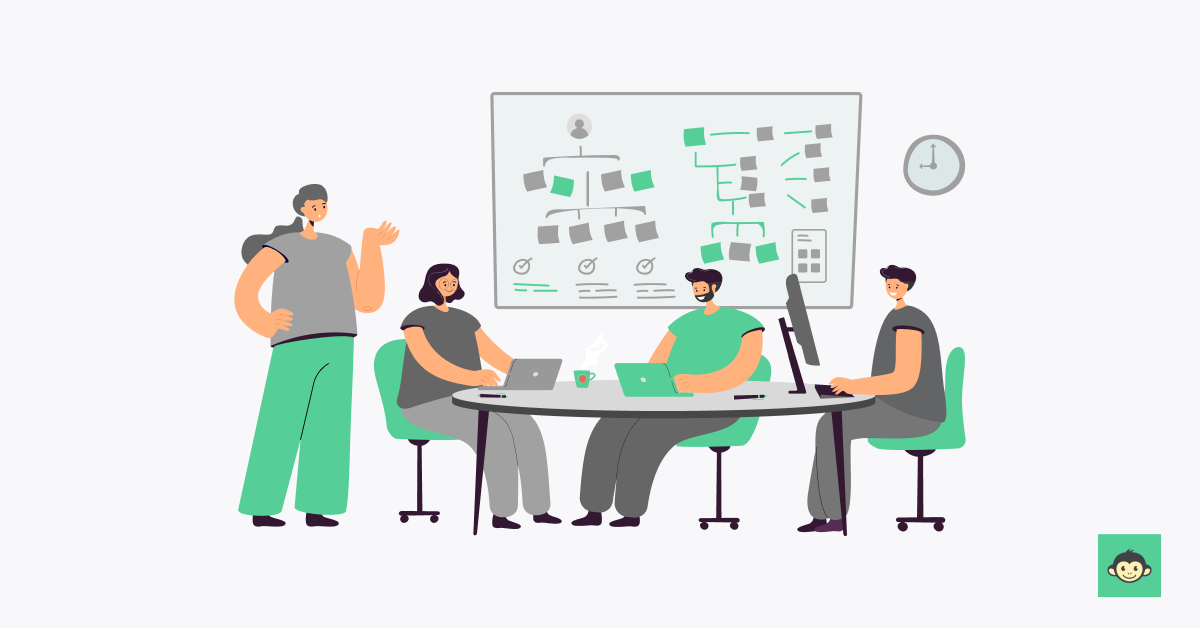
Enhancing productivity within a distributed team is paramount for achieving organizational goals and maintaining competitiveness in today's dynamic business landscape.
A distributed team, comprised of individuals working remotely from various locations, requires a tailored approach to maximize efficiency and collaboration while mitigating challenges associated with geographical dispersion.
One key aspect of improving distributed team productivity is establishing clear goals, objectives, and expectations.
Providing remote team members with a clear understanding of their roles and responsibilities, as well as outlining specific targets and deadlines, fosters alignment and focus towards common objectives. Regular communication of priorities and updates helps keep distributed teams on track and accountable for their contributions.
Effective communication lies at the heart of productivity within distributed teams. Leveraging a combination of synchronous and asynchronous communication channels enables real-time collaboration and information sharing while accommodating different time zones and work schedules.
Utilizing video conferencing, instant messaging, email, and project management platforms facilitates seamless interaction and collaboration among remote team members, fostering a sense of connection and engagement.
Why distributed teams are the future of workforce?
Characterized by individuals collaborating remotely from diverse locations, distributed teams offer a myriad of advantages that position them as the preferred model for organizations seeking agility, resilience, and efficiency in today's competitive environment.
- Cost savings: Operating without the constraints of a physical office space reduces overhead expenses, offering significant cost savings in terms of rent, utilities, and maintenance.
- Enhanced productivity: Remote work empowers employees to design their work environment conducive to focus and efficiency, resulting in heightened productivity and performance.
- Improved work-life balance: Distributed teams afford employees greater flexibility to manage their personal and professional commitments, leading to reduced stress and enhanced well-being.
- Access to global talent: By transcending geographical boundaries, distributed teams enable organizations to tap into a vast and diverse talent pool, fostering innovation and creativity.
- Geographical flexibility: With distributed teams, organizations can expand their reach and enter new markets seamlessly, without the need for establishing physical offices.
- Business continuity: Distributed teams exhibit greater resilience in the face of disruptions such as natural disasters or global crises, ensuring uninterrupted operations and continuity.
- Environmental sustainability: By reducing the need for commuting and physical infrastructure, distributed teams contribute to a greener planet, aligning with sustainability goals.
How to measure your distributed workforce effectiveness?
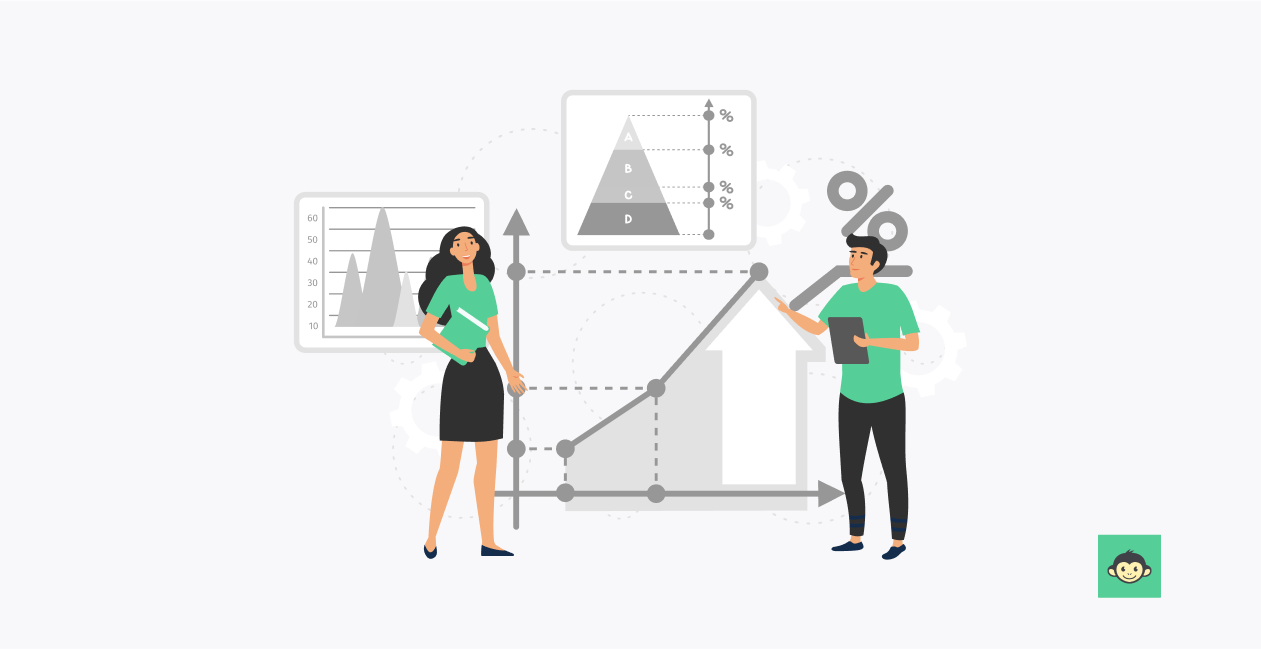
Measuring the effectiveness of a distributed workforce involves assessing both individual and team performance. Here are some key metrics and methods:
- Employee productivity: Measure individual and team productivity using tools like time-tracking software distributed workforce tools or project management platforms. Analyze trends and identify areas for improvement.
- Quality of work: Evaluate the quality of work produced by remote employees through peer reviews, client feedback, or quality assurance processes.
- Employee surveys: Conduct regular surveys to gather feedback from remote workers about their experiences, challenges, and suggestions for improvement.
- Team engagement: Monitor team and employee engagement and collaboration by assessing participation in meetings, contributions to shared documents, and teamwork within virtual environments.
- Communication effectiveness: Analyze the efficiency and effectiveness of communication channels and tools. Are messages being delivered and understood in a timely manner?
- Adherence to deadlines: Assess whether remote employees are meeting project deadlines and if delays are occurring, identify the root causes.
- Customer feedback: Solicit feedback from customers or clients who interact with remote team members to gauge their satisfaction and the quality of service provided.
- Employee well-being and satisfaction: Evaluate the well-being and job satisfaction of remote employees. Factors like work-life balance, mental health, and overall job contentment play a crucial role in the effectiveness of a distributed workforce. Regularly conduct well-being surveys to gauge the emotional health of your team members.
- Adaptability and learning curve: Assess how well your remote workforce adapts to new technologies and processes. A distributed workforce should demonstrate an ability to quickly learn and adapt to changes in distributed work environments and tools.
- Employee turnover rate: Monitoring the turnover rate among remote employees is essential. A high turnover rate can indicate issues within the distributed workforce, such as dissatisfaction or a lack of opportunities for career growth.
- Cost savings and ROI: Calculate the cost savings and return on investment (ROI) achieved by adopting a distributed workforce model. Consider factors like reduced office expenses, increased productivity, and access to a broader talent pool.
- Utilization of collaboration tools: Evaluate the usage and effectiveness of collaboration tools and software within your distributed workforce. Analyze metrics such as user adoption rates, engagement levels with collaborative features, and the impact of these tools on communication and workflow efficiency.
- Innovation and creativity: Measure the level of innovation and creativity demonstrated by remote teams in problem-solving, idea generation, and product development. Assess the quantity and quality of innovative ideas and initiatives proposed by remote employees to drive business growth and differentiation.
How to develop a good distributed workforce leadership?

Lead by example
Demonstrate the behaviors and work ethic you expect from your remote team. Show commitment, punctuality, and clear communication.
Set clear expectations
Clearly communicate goals, expectations, and performance metrics to remote team members. Ensure they have a clear understanding of their roles and responsibilities.
Trust and empower
Trust your remote employees to manage their work effectively. Empower them with autonomy, allowing them to make decisions and take ownership of their tasks.
Effective communication
Establish open, transparent, and regular communication channels. Encourage feedback and actively listen to concerns and suggestions from your more distributed team members.
Adaptability
Be adaptable in your leadership style. Recognize that different team members may require different levels of support and guidance based on their experience and role adaptable in your leadership style.
Recognize that different team members may require different levels of support and guidance based on their experience and role.
Mentorship and development
Offer mentorship opportunities and support remote employees in their professional growth. Provide access to training and resources.
Cultural sensitivity
Be mindful of cultural differences within your team and foster an inclusive environment that respects and celebrates diversity.
Conflict resolution
Develop conflict resolution strategies for remote teams. Address conflicts promptly and constructively to maintain a harmonious work environment.
27 Distributed workforce questionnaires to ask your employees

- How would you rate your overall satisfaction with remote work?
- Are you provided with the necessary tools and technology to work effectively from your remote location?
- How do you manage work-life balance while working remotely?
- Are you clear about your roles and responsibilities as a remote team member?
- Do you feel that your contributions are recognized and valued by the company?
- How often do you experience communication challenges with your team or manager?
- Are you comfortable with the level of autonomy you have in your role?
- Do you have access to opportunities for professional development and growth?
- How would you rate the effectiveness of virtual team meetings?
- Are there any specific challenges you face due to time zone differences within the team?
- Do you feel connected to your colleagues and the company culture despite working remotely?
- Are there any security concerns you've encountered while working remotely?
- How often do you experience technical issues that disrupt your work?
- Are you satisfied with the level of support and guidance provided by your manager?
- How do you manage your work-related stress and burnout while working remotely?
- Are there any tools or software you feel would improve your remote work experience?
- Do you have opportunities to collaborate and engage in team-building activities?
- Are there any specific challenges you face in managing your workload remotely?
- How do you stay motivated and maintain a sense of purpose in your remote role?
- Are you aware of the company's goals and how your work contributes to them?
- Do you feel you have a healthy work-life balance while working remotely?
- Are there any cultural differences within the team that you find challenging?
- How do you handle conflicts or disagreements with remote colleagues?
- Are you satisfied with the level of communication and feedback from your manager?
- Do you believe your career progression is supported in your remote role?
- How would you rate your ability to disconnect from work during non-working hours?
- Are there any additional resources or support you need to excel in your remote position?
Conclusion
Managing a distributed workforce comes with its challenges, but when done right, it can lead to a highly productive, engaged, and satisfied team. Effective leadership, clear communication, and a commitment to addressing issues are key to harnessing the benefits of remote work.
By regularly measuring workforce effectiveness and seeking feedback from employees, businesses can continually improve their distributed work strategies and create a thriving virtual work environment.



